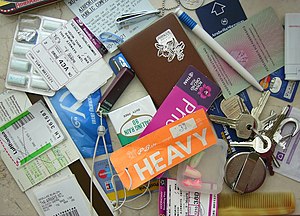Creator of Percy Jackson Offers Tips for Getting Dyslexic Kids to Read
Rick Riordan created his book series to help his son battle learning disabilities.
When author Rick Riordan’s son Haley was 7, he hated school. Haley had attention deficit hyperactivity disorder (ADHD) and dyslexia. Reading and learning were serious challenges for him. Riordan relates that Haley used to hide under the family’s dining-room table to get out of doing his homework or to avoid reading.
Royal Blood 
- Percy Jackson - Image via Wikipedia

- Percy Jackson - Image via Wikipedia
Riordan loved books and was desperate that Haley should love them, too. That’s why he started writing the Percy Jackson series, which began as Haley’s bedtime stories. Riordan gave Percy the same learning disabilities as Haley: ADHD and dyslexia; but the author depicted the learning deficits as indications of royal Olympian blood, medical conditions found only in demigods.
Today, Haley is 16 years-old. He walked into his father’s office not long ago, announcing that he’d just completed a 600-page manuscript. That would be a stunning accomplishment for any 16 year-old, but coming from Haley, the announcement was proof positive that the boy had turned the tide against dyslexia and had come to love the printed word. Riordan had won and Haley was the benefactor.
Long Journey
Over the course of the past nine years, Riordan’s protagonist became the main character of a five-book series. As Percy rose to stardom, Haley was taking his own journey. He came out from under the dining room table and instead of avoiding books, became an avid reader.
As Riordan looks back and reflects upon the success of the Percy Jackson series and Haley’s embrace of books and writing, he decided to share what he has learned about the process of turning children into bookworms. It boils down to four essential factors:
1. Provide an example. If you don’t take the time to read, it’s a good bet your children won’t, either. If your kids see you reading, they’ll follow your good example. Make reading a part of your family’s daily schedule. Declare the hour of 7-8 PM family reading hour. Have general book discussions. Discuss what makes a book or an author great.
2. Find books your children will want to read. A series is good because it will leave your child wanting to read more. Don’t worry about the caliber of the books your child seems to prefer. The main thing is to build a foundation—you want to get your child reading for pleasure. Make friends with the librarian at your local children's library and pick her brains about books your child might enjoy.
3. Think about your child’s reading environment. In general, you should offer your child a place to read where he won’t be distracted by noise. On the other hand, some children with ADHD find that fiddling makes it easier to concentrate. If squeezing a stress ball, for instance, makes it easier for your child to read, by all means, have him squeeze away.
4. Stay positive about the future. Children with ADHD and dyslexia can grow up to become successful. More millionaires than not have dyslexia. Adults with ADHD have the gift of hyperfocus and can stay focused on problems for as long as necessary, something the rest of us find difficult. People with learning disabilities have to learn to think outside the box because they have learning differences. As a result, they become excellent at problem-solving. The main thing is to get our kids through school so that they become free to find their niche.
Related articles
- Meet The Greek Gods Of Fantasy Film 'Percy Jackson' (screenrant.com)
- Kids With ADHD Often Have Other Problems (webmd.com)
- Documenting Dyslexia (community.cognibeat.com)








